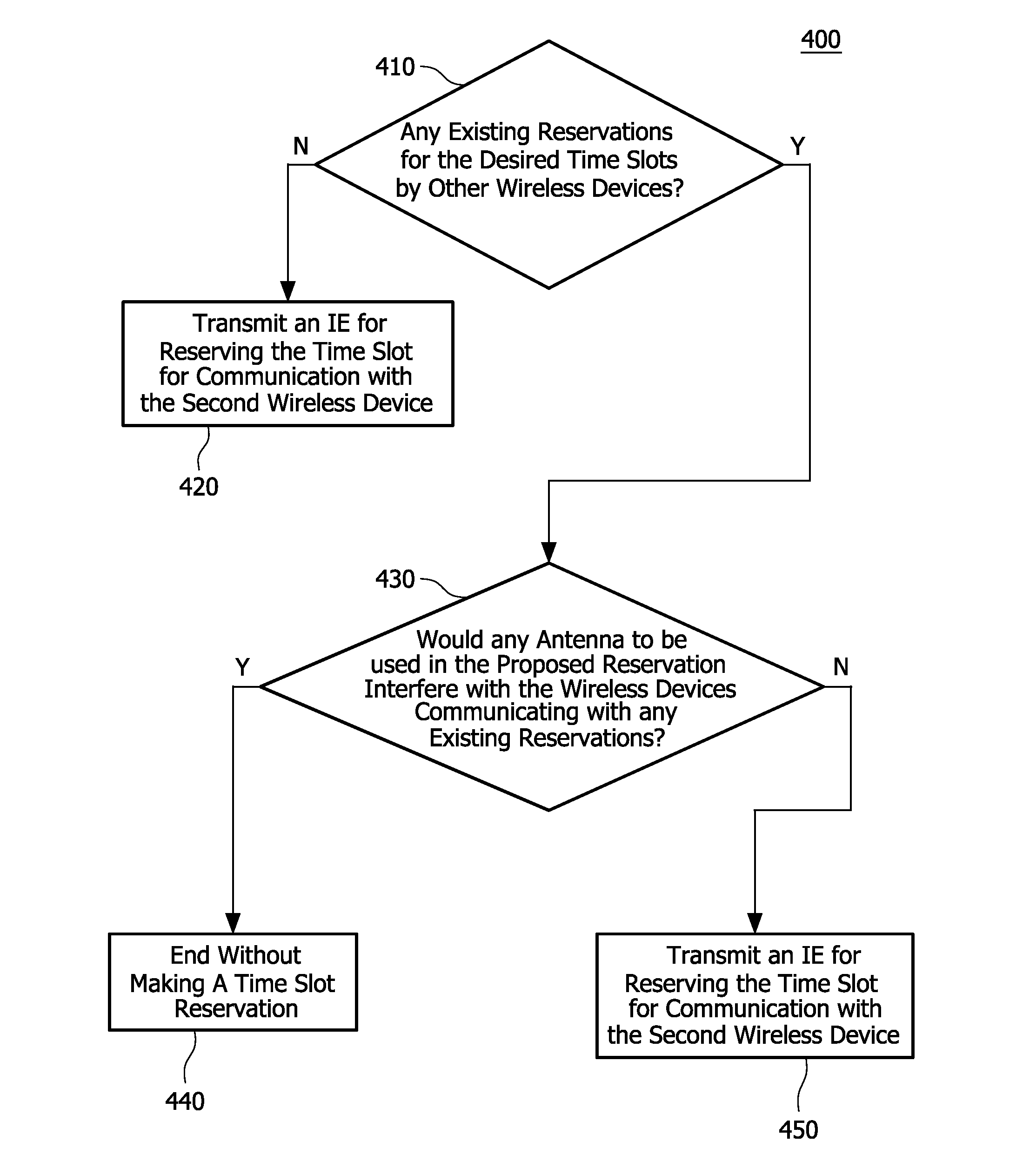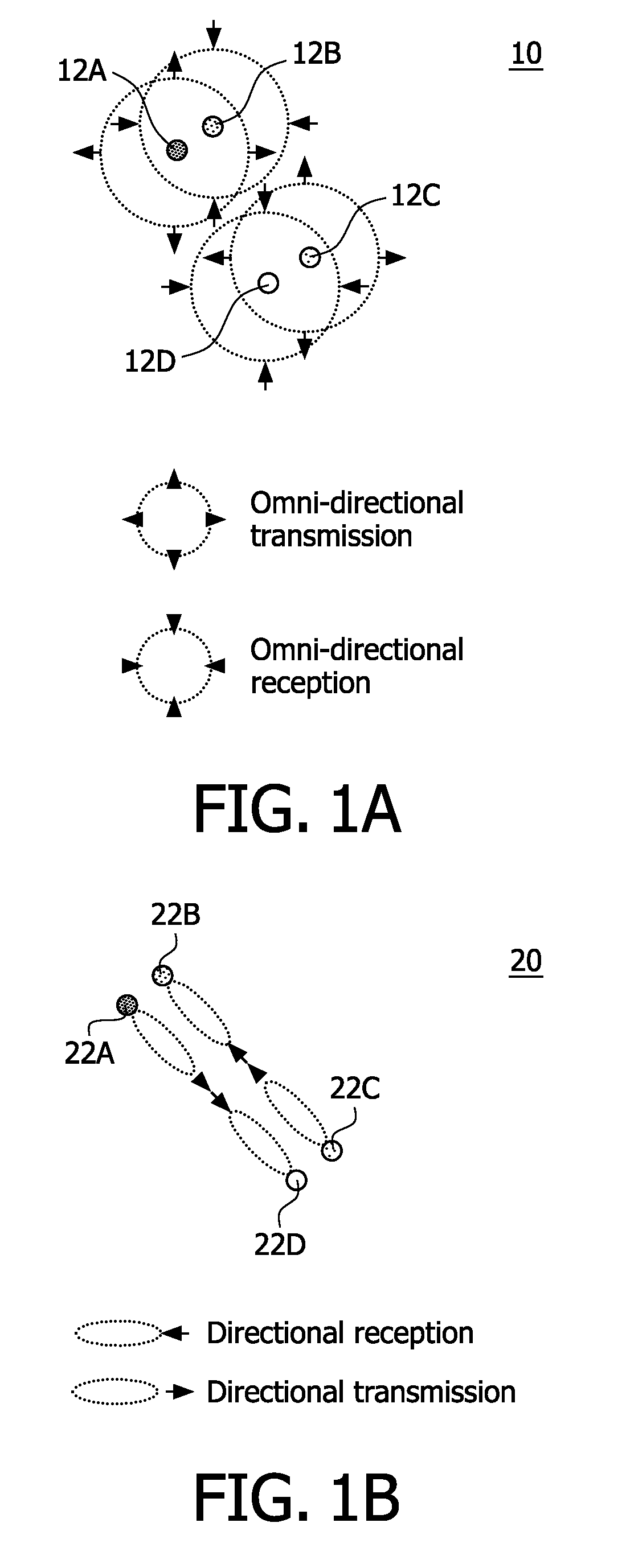Method and system of communication employing spatial reuse reservation protocol
a technology of spatial reuse and reservation protocol, applied in the field of wireless communication, can solve the problems of substantially greater attenuation of signals broadcast or transmitted at these higher frequencies, and achieve the effects of reducing the beamwidth of the transmitting or broadcasting antenna pattern, sufficient antenna gain, and acceptable communication rang
- Summary
- Abstract
- Description
- Claims
- Application Information
AI Technical Summary
Benefits of technology
Problems solved by technology
Method used
Image
Examples
Embodiment Construction
[0019]FIG. 2 is a functional block diagram of a wireless device 200. As will be appreciated by those skilled in the art, one or more of the various “parts” shown in FIG. 2 may be physically implemented using a software-controlled microprocessor, hard-wired logic circuits, or a combination thereof. Also, while the parts are functionally segregated in FIG. 2 for explanation purposes, they may be combined variously in any physical implementation.
[0020]Wireless device 200 includes a transceiver 210, processor 220, memory 230, and a directional antenna system 240.
[0021]Transceiver 210 provides functionality for wireless device 200 to communicate with other wireless devices in a communication network according to the standard protocols of the wireless network. For example, in one embodiment wireless device 200 is adapted to communicate in a communication network that operates according to IEEE 802.11.
[0022]Processor 220 is configured to execute one or more software algorithms in conjuncti...
PUM
 Login to View More
Login to View More Abstract
Description
Claims
Application Information
 Login to View More
Login to View More - R&D
- Intellectual Property
- Life Sciences
- Materials
- Tech Scout
- Unparalleled Data Quality
- Higher Quality Content
- 60% Fewer Hallucinations
Browse by: Latest US Patents, China's latest patents, Technical Efficacy Thesaurus, Application Domain, Technology Topic, Popular Technical Reports.
© 2025 PatSnap. All rights reserved.Legal|Privacy policy|Modern Slavery Act Transparency Statement|Sitemap|About US| Contact US: help@patsnap.com



